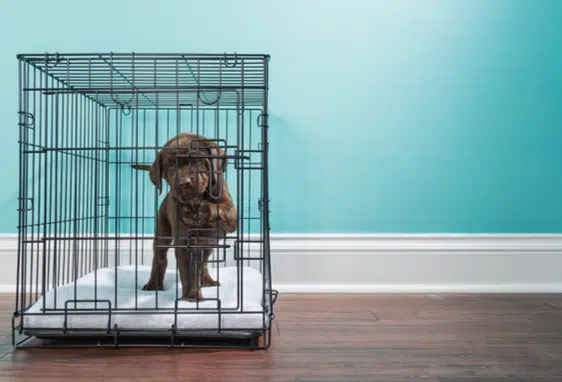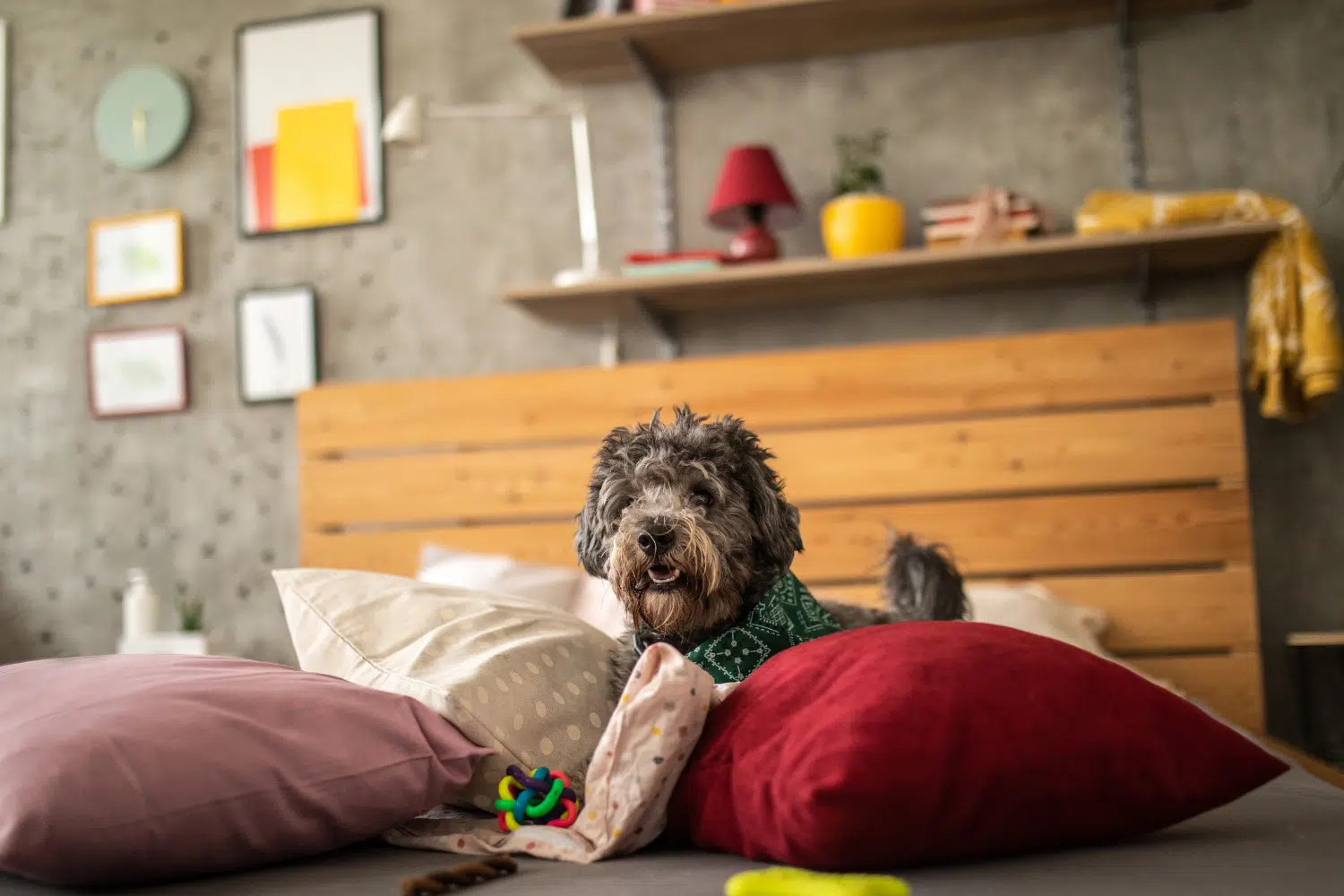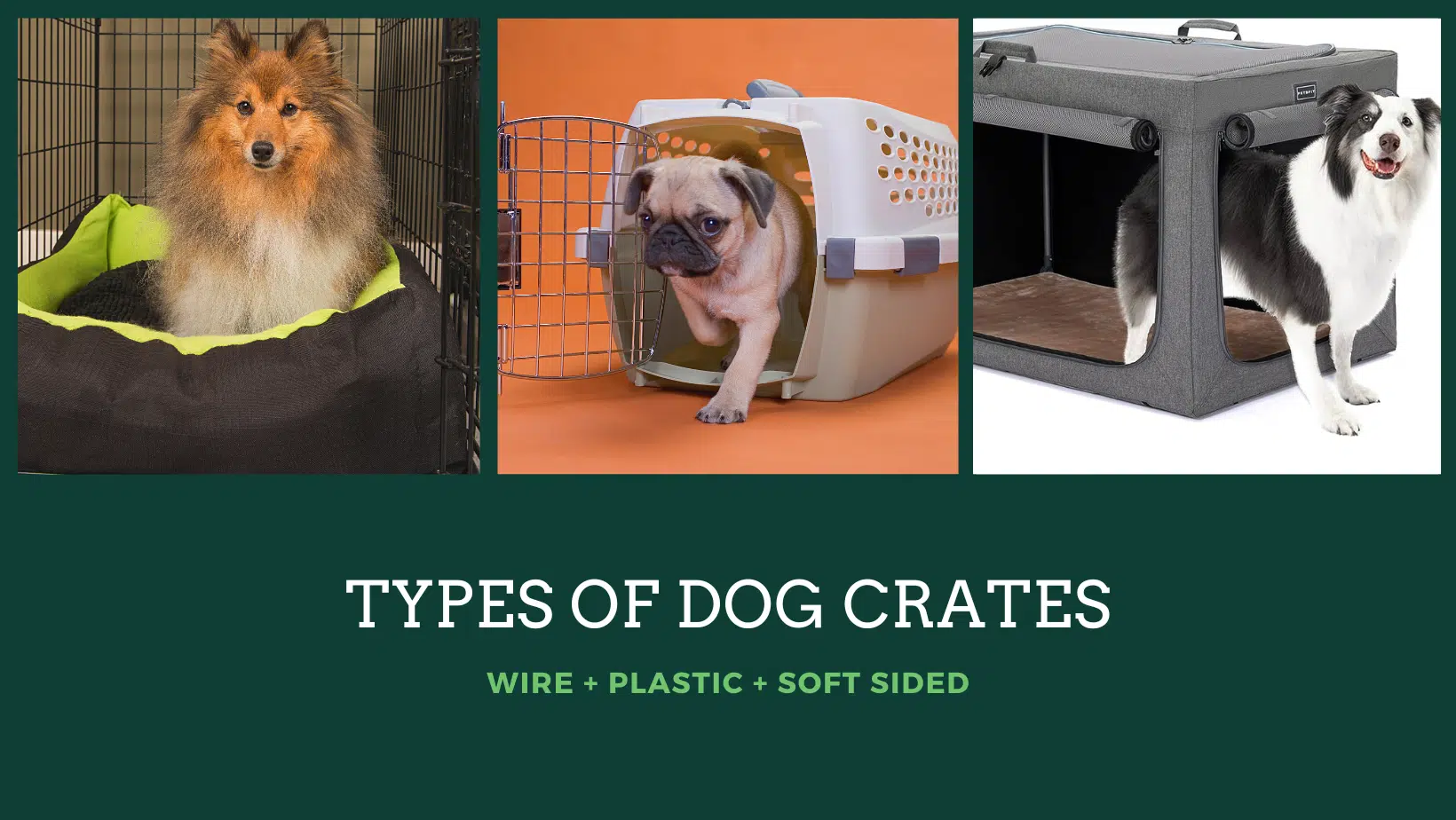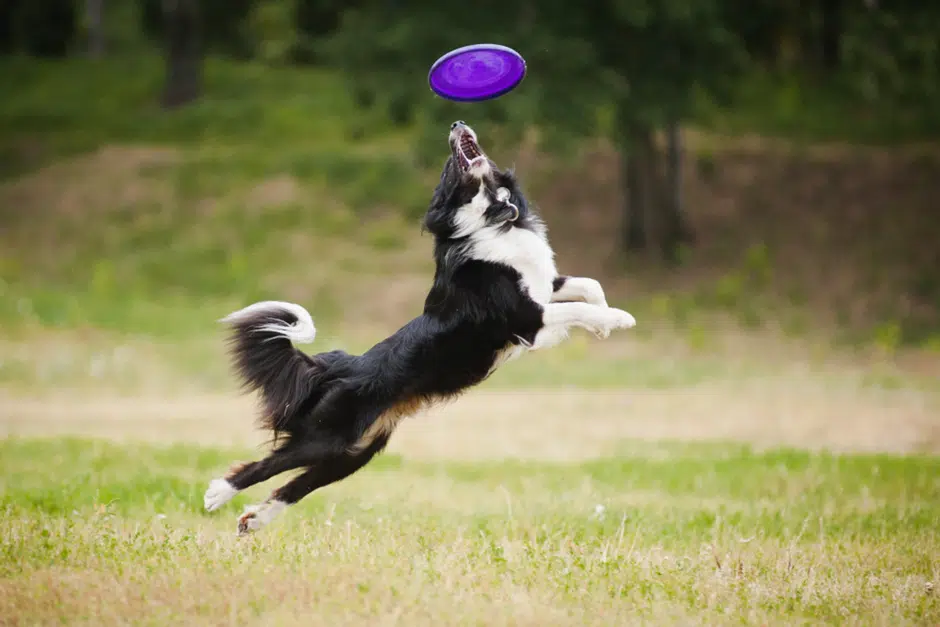Crate training a puppy at night is a crucial step in establishing a routine for peaceful sleep, both for your furry companion and yourself. By implementing effective strategies and techniques, you can create a comfortable and secure environment for your puppy while also ensuring a restful night’s sleep for everyone in the household. In this detailed guide, we’ll explore the step-by-step process of crate training at night, addressing common challenges and providing practical tips to help you and your puppy navigate this important transition with ease.
Understanding How to Crate Train a Puppy at Night
Crate training is more than just confining a pet; it’s about creating a haven for your puppy. The primary purpose behind the crate train process is to provide a secure environment, especially during the vulnerable nighttime hours.
- Definition of Crate Training: It’s a method used to house train dogs, teaching them to associate the crate with comfort and safety.
- Purpose:
- Aiding in housebreaking and potty training
- Offering a safe space during times of stress or anxiety
The Importance of Nighttime Crate Training Puppies
A Nighttime crate train routine plays a pivotal role in a puppy’s life. Not only does it ensure a safe space for the puppy’s sleep schedule, but it also establishes a routine that promises better sleep for both the young puppy and the pet parents.
- Safety First: The crate acts as a protective barrier, keeping the puppy safe from potential hazards in the home. Ensure the dog crate door is also clear of barriers when open.
- Building Routine: Just like humans, puppies thrive on routine. A consistent bedtime can help reduce nighttime whining and distress barking.
- Housebreaking Aid: With proper crate training, puppies learn to control their bladder, making the potty training process smoother. Over time there will be fewer nighttime potty breaks or potty accidents.
For more insights on dog health and safety during crate training, check out Dog Health and Safety Tips.
Challenges of Nighttime Crate Training
Training a puppy to love its crate at night isn’t always a walk in the park. There are several challenges that new dog and puppy owners’ might face when they begin crate-training puppies.
- Puppy Fears and Anxieties: It’s natural for most puppies to feel scared or anxious in a new environment. Understanding these fears is the first step to address them.
- Distress Calls vs. Attention-Seeking: Not all barks are the same. While some puppy barking might be genuine distress calls, others could be mere attention-seeking behaviors.
- The Need for Patience: Consistency and patience are the keys to successful crate training. It’s essential to remain calm, even when the puppy tests your limits.
Setting the Right Expectations
Every puppy is different, and what works for one might not work for another. It’s crucial to:
- Recognize individual differences
- Be adaptable and flexible in the training process
- Celebrate small successes
- Understand that setbacks are part of the journey
Nighttime crate training is an essential aspect of raising a well-adjusted puppy. With the right approach, patience, and consistency, it can lead to a harmonious relationship between the pet and the owner.
Read more on dog training with Furlyfe’s Dog Training 101.
Setting Up the Crate for Optimal Nighttime Training
Choosing the Right Crate
When it comes to crate training, one of the first decisions you’ll need to make is selecting the appropriate crate size. This choice can significantly impact your puppy’s comfort and your success in the training process.
- Material Choices
- Plastic vs. Metal: Plastic crates are often preferred for their cozy feel, but metal crates offer better ventilation. Consider your puppy’s needs and your home environment when making a choice.
- Soft-sided crates: Ideal for travel, these crates offer a temporary solution but might not stand up to a persistent chewer.
- Size Considerations
- It’s crucial to choose a crate that’s just the right size. A crate that’s too large can make a puppy feel insecure, while a too-small crate can be uncomfortable. Remember, the crate should be a safe haven, not a prison.
For more on selecting the perfect dog crate, consider checking out this Dog Training and Behavior Guidance.
Where to Put the Crate at Night
Location, location, location! The placement of your puppy’s crate can make a world of difference in their nighttime experience.
- Location Factors
- Keeping the crate in proximity to the owner’s bedroom can help the puppy feel secure during the initial nights.
- It’s best to avoid high traffic areas to ensure your puppy isn’t disturbed by nighttime wanderers in the house.
- Environmental Considerations
- Ensure the crate is placed away from direct sunlight or drafts.
- A quiet environment is essential. Remember, puppies have sensitive ears, and even the slightest noise can be a disturbance.
Addressing Whines and Barks
Understanding your puppy’s vocalizations is key to a successful crate train process.
- Understanding the Barking Puppy
- Distress Barking: If your puppy seems genuinely distressed, it’s essential to comfort them without encouraging the behavior.
- Demand Barking: This is attention-seeking behavior. Address it without reinforcing the bark.
- Potty Break Needs
- Puppies have small bladders. If they’re whining, they might need a potty break. Setting a nighttime potty train schedule can help in housebreaking and reduce distress.
Optimizing Your Puppy’s Crate Area for Nighttime Rest
Ensuring your new puppy’s crate is set up for success is the final step in the process.
- Comfort Essentials
- A comfortable bed is a must. Consider the bedding material and ensure it’s suitable for your puppy’s size and breed.
- Safe toys can keep the puppy occupied, reducing the chances of nighttime whining.
- Safety Precautions
- Proper ventilation is crucial, especially in plastic crates.
- Always check toys and bedding for potential choking hazards.
- Additional Accessories
- A calming pheromone diffuser can help soothe a nervous puppy.
- The Snuggle Puppy toy offers warmth and a heartbeat sound, mimicking the comfort of littermates.
- A fan or sound machine can provide white noise, masking potential disturbances.
- Some trainers recommend a crate cover to create a den-like environment, but it’s essential to ensure it doesn’t pose a safety risk.
With the right setup, your puppy will view their crate as a safe, comforting space, making the crate training process smoother for both of you.
Nighttime Routine and Potty Breaks
Establishing a Pre-Bedtime Routine
Every puppy thrives on predictability. Establishing a consistent pre-bedtime routine not only provides this predictability but also significantly reduces nighttime anxiety, ensuring a smoother crate training experience for new puppies.
- The Role of Routine
- Routines offer a sense of security for puppies, helping them understand what’s expected.
- A consistent routine minimizes the chances of nighttime whining and distress barking, making the entire household sleep better.
- Activities to Wind Down
- Engage in calming activities like gentle play or cuddling. This helps the puppy associate bedtime with relaxation.
- Avoid overstimulating activities right before bedtime. This includes intense play or new experiences that might excite the puppy.
- Consider using calming aids like Adaptil, which mimics the natural pheromones of a nursing mother dog, providing comfort to puppies.
Puppy’s Eating and Drinking Schedule
What and when your puppy eats can significantly impact their nighttime behavior, especially when it comes to nighttime potty breaks.
- Timing is Everything
- Avoid feeding your puppy right before bed. This reduces the chances of midnight potty emergencies.
- Limit water intake in the evening. While it’s essential to ensure your puppy is hydrated, try to provide the majority of their water intake earlier in the day.
- For more detailed feeding schedules and recommendations, experts on PetMD offer valuable insights.
- Adjusting with Growth
- As puppies grow, their dietary needs and schedules might change. It’s essential to monitor and adjust based on their needs, ensuring they’re well-fed but not overfed.
Consistency in Crate Training
Whether it’s day or night, consistency is the key to the crate train success.
- Daytime vs. Nighttime Crating
- Introduce the crate during the day. This helps the puppy associate it with positive experiences, easing the transition to nighttime crating.
- Ensure the crate is a happy place. Use treats, toys, and positive reinforcement to create positive crate associations.
- Positive Reinforcement Techniques
- Always reward your puppy for entering the crate willingly. This can be with treats, praise, or their favorite toy.
- Avoid any negative experiences related to the crate. Never use it as a punishment or time-out spot.
- For more techniques and tips on positive reinforcement, resources like Positive Puppy Training can be invaluable.
Burning Pre-Bedtime Energy
A tired puppy is a good puppy, especially when it’s bedtime.
- Physical Exercise
- Engage in appropriate play and walks to ensure your puppy is tired out. This doesn’t mean exhausting them but ensuring they’ve had enough activity to sleep soundly.
- Always ensure the exercise is appropriate for the puppy’s age, breed, and health.
- Mental Stimulation
- Challenge your puppy mentally with toys or short training sessions. Mental fatigue can be as effective as physical fatigue in ensuring a good night’s sleep.
Navigating Midnight Potty Breaks
Even with the best-laid plans, midnight potty breaks might be a reality for pet parents, especially with younger puppies.
- Recognizing the Need
- Learn to differentiate between a genuine potty break whine and attention-seeking behavior. Responding timely to genuine needs can prevent accidents.
- Setting a Potty Schedule
- While it might seem counterintuitive, setting a midnight potty schedule can help. This means taking the puppy out at set times, reducing the chances of accidents or distress.
Establishing a solid nighttime routine, understanding feeding schedules, and ensuring consistent crate training practices can make nighttime crate training a breeze for many puppies. With patience, understanding, and consistency, both you and your young dog can enjoy peaceful puppy sleep.
Crate Types and Accessories
Understanding Different Crate Types
Selecting the right crate is paramount for a successful crate training experience. The type of crate you choose can significantly influence your puppy’s comfort and adaptability.
- Material Choices
- Plastic Crates: These are durable and often preferred for their cozy, den-like feel. They’re especially ideal for dogs that appreciate a more enclosed environment and are frequently used for airline travel.
- Metal Crates: Offering excellent ventilation and visibility, these crates are suitable for larger breeds and those dogs that prefer a more open space. Their foldable nature makes them convenient for transport.
- Soft-sided Crates: Lightweight and perfect for travel, these crates are a hit among frequent travelers. However, they might not stand up to persistent chewers.
- Wooden and Furniture-style Crates: These blend seamlessly with home decor, serving both aesthetic and functional purposes. For stylish ideas, check out Dog Crate Central.
- Size and Growth Considerations
- It’s essential to choose a crate that can grow with your puppy. Some crates come equipped with dividers, allowing you to adjust the space as your puppy grows.
- Always ensure that your dog can comfortably stand, turn, and lie down in the crate. For more detailed guidelines, The Humane Society offers invaluable insights.
Optimal Placement and Environmental Setup
Where you place the crate in your home can make a world of difference in your puppy’s crate training experience.
- Safety First
- Ensure the crate is positioned away from potential hazards like electrical cords or areas with heavy foot traffic.
- Avoid placing the crate in direct sunlight or drafty areas to ensure your puppy’s comfort.
- Creating a Welcoming Environment
- Personalize the crate with familiar toys or blankets to make it feel like home.
- Consider playing calming music or white noise to soothe your puppy. Websites like Dog Music offer specialized playlists for dogs.
Essential Crate Accessories
Accessorizing the crate can enhance your puppy’s comfort and safety.
- Bedding
- A comfortable bed is non-negotiable for any puppy starter kit. Opt for bedding that’s washable, chew-resistant, and suitable for your puppy’s size.
- Elevated beds can be a boon for breeds prone to overheating or for homes in warmer climates.
- Toys and Distractions
- Safe chew toys, such as Kongs, can keep your puppy occupied and reduce feelings of isolation.
- Ensure that the toys you choose don’t have small parts that can be a choking hazard.
- Interactive toys can provide mental stimulation, ensuring your puppy is entertained during crate time.
- Hydration Solutions
- Consider attachable water bowls to minimize spills.
- Always ensure your puppy has access to fresh water, especially during warmer months.
Advanced Crate Setups and Ideas
Incorporating advanced setups can make the crate a seamless part of your living space.
- Crate Covers
- A crate cover can create a den-like environment, which many dogs find comforting.
- Ensure the cover is breathable to maintain proper ventilation.
- Integration with Home Decor
- Modern crate designs can double up as furniture, such as end tables, making them both functional and stylish.
- Tech Integrations
- Smart crates with built-in cameras allow you to monitor your puppy in real-time.
- Various apps and devices can track your puppy’s activity and comfort levels, ensuring they’re always at ease.
The type of crate, its placement, and the accessories you choose play a pivotal role in your puppy’s crate training journey. With the right choices, the crate can become a safe haven for your puppy, ensuring both their comfort and your peace of mind.
Addressing Common Challenges and Solutions in Crate Training
Crate training, while beneficial, isn’t always a walk in the park. Puppies, with their boundless energy and curiosity, can sometimes present challenges that need addressing. In this section, we’ll delve into some common issues faced during crate training and provide solutions to ensure a smooth process.
Dealing with Separation Anxiety
One of the most common challenges faced by many pet parents is separation anxiety. This can manifest in various ways, from incessant barking to destructive behavior.
- Recognizing the Signs
- Whining or barking when left alone.
- Destructive behavior, especially around doors or windows.
- Pacing or drooling excessively.
- Solutions
- Gradual Introduction: Start by leaving your puppy in the crate for short periods, gradually increasing the duration.
- Distractions: Toys or treats can divert attention and reduce anxiety.
- Calming aids, such as Adaptil, can help soothe anxious puppies.
Overcoming Resistance to the Crate
Not all puppies take to the crate immediately. Some might resist entering or staying in the crate.
- Possible Causes
- Negative associations with the crate.
- The crate is uncomfortable or feels unsafe.
- Past traumatic experiences.
- Solutions
- Positive Reinforcement: Reward your puppy for entering and staying in the crate.
- Make the crate comfortable with bedding and toys.
- Place the crate in a quiet, low-traffic area to reduce disturbances.
Nighttime Whining
New puppy owners should know it’s not uncommon for puppies to whine during the night, especially young puppies, during the initial days of training.
- Understanding the Cause
- Need for a potty break.
- Feeling isolated or scared.
- Hunger or thirst.
- Solutions
- Ensure a consistent feeding and potty schedule.
- Place the crate in your bedroom for the first few nights to reduce feelings of isolation.
- Consistency is key. Avoid letting the puppy out of the crate when they whine, or they might associate whining with freedom.
Avoiding Over-reliance on the Crate
While crates are excellent tools, they shouldn’t become permanent homes for adult dogs or your puppy.
- Balancing Crate Time
- Ensure your puppy spends ample time outside the crate for play, exercise, and bonding.
- Avoid crating for extended periods. Puppies, especially, need frequent breaks.
- Solutions
- Set a daily schedule that includes crate breaks.
- Engage in interactive play sessions to burn energy and foster bonding.
- Consider doggy daycare or a dog walker if you’re away for extended periods.
Ensuring Safety Inside the Crate
The crate should be a safe haven for your puppy, free from potential hazards.
- Common Hazards
- Choking hazards like small toys or detachable parts.
- Inadequate ventilation, especially in plastic crates.
- Exposure to extreme temperatures.
- Solutions
- Regularly inspect the crate for potential hazards.
- Ensure proper ventilation and temperature control.
- Place the crate away from direct sunlight, heaters, or air conditioning vents.
While crate training offers numerous benefits, it’s essential to be aware of potential challenges and address them proactively. Remember, the goal is to make the crate a safe, comfortable space where your puppy feels secure and at ease.
Conclusion
Crate training a puppy at night is a journey filled with its share of challenges and rewards. While the process requires patience, consistency, and understanding, the end result is a well-adjusted dog that views its crate as a safe haven.
By addressing common challenges, understanding your puppy’s needs, and creating a comfortable environment, you pave the way for a successful experience. Remember, the goal isn’t just to confine but to provide a space where your puppy feels secure, loved, and at home. With the right approach, crate train process becomes more than just a nighttime routine; it becomes a foundation for a lifelong bond of trust and understanding between you and your furry companion.
Meet West Highland White Terrier
Interesting Reads:
Best Crates for Small Dogs 2024














Get involved!
Comments